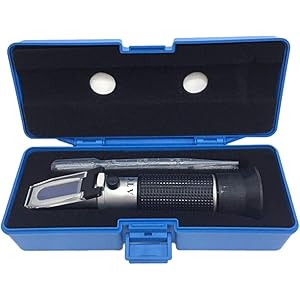Understanding Brettanomyces in Wine
Brettanomyces, often referred to as “Brett,” is a type of yeast that can significantly impact the flavor profile of wine. While some winemakers appreciate its contribution to complexity, excessive Brett can lead to undesirable aromas and flavors, such as barnyard, medicinal, or band-aid notes. Understanding how to prevent Brettanomyces in wine is crucial for maintaining the desired quality and character of the final product.
Sanitation Practices in the Winery
One of the most effective ways to prevent Brettanomyces in wine is through rigorous sanitation practices. This includes cleaning and sterilizing all equipment, barrels, and storage containers before and after use. Utilizing sulfites and other sanitizing agents can help eliminate any existing Brett cells and prevent their growth. Regularly inspecting and maintaining cleanliness in the winery environment is essential to minimize contamination risks.
Monitoring Fermentation Conditions
Controlling fermentation conditions is vital in preventing Brettanomyces. Maintaining optimal temperatures during fermentation can inhibit the growth of this yeast. Cooler fermentation temperatures are generally less favorable for Brett, while warmer conditions can promote its proliferation. Additionally, monitoring pH levels and ensuring they remain within a suitable range can help deter Brettanomyces activity.
Utilizing Sulfur Dioxide
Sulfur dioxide (SO2) is a powerful tool in the winemaker’s arsenal for preventing Brettanomyces. Adding SO2 at various stages of winemaking, including during crushing, fermentation, and bottling, can inhibit the growth of Brett. It is essential to monitor SO2 levels carefully, as excessive amounts can negatively affect the wine’s flavor and aroma. Proper dosing and timing are key to effectively using sulfur dioxide.
Choosing the Right Yeast Strains
Selecting appropriate yeast strains for fermentation can also help prevent Brettanomyces. Some yeast strains are more competitive and can outcompete Brett for nutrients, thereby limiting its growth. Researching and choosing yeast strains known for their robustness and ability to produce high-quality wines can significantly reduce the risk of Brett contamination.
Get more content like this!
Sign up to receive updates and new terms first hand.
Regular Testing for Brettanomyces
Implementing a regular testing protocol for Brettanomyces is essential for early detection and prevention. Winemakers can utilize various methods, such as plating techniques or PCR testing, to monitor for the presence of Brett in wine. By identifying potential issues early, corrective actions can be taken before the wine is adversely affected.
Barrel Management Strategies
Barrel management plays a critical role in preventing Brettanomyces. Using new barrels can reduce the risk of Brett contamination, as older barrels may harbor yeast and bacteria. Additionally, regularly cleaning and maintaining barrels, as well as using steam or hot water treatments, can help eliminate any Brett that may be present. Proper storage conditions for barrels are also essential to prevent yeast growth.
Controlling Oxygen Exposure
Oxygen exposure can promote the growth of Brettanomyces, making it crucial to control oxygen levels throughout the winemaking process. Utilizing inert gases during bottling and minimizing headspace in bottles can help reduce oxygen contact. Implementing proper sealing techniques and using closures that limit oxygen ingress can further protect the wine from Brett contamination.
Educating Staff and Winemakers
Education and training for winery staff and winemakers are vital in preventing Brettanomyces. Understanding the risks associated with this yeast and implementing best practices can significantly reduce the likelihood of contamination. Regular workshops and training sessions can help ensure that everyone involved in the winemaking process is aware of the importance of sanitation, monitoring, and proper handling techniques.
Implementing a Comprehensive Quality Control Program
Finally, establishing a comprehensive quality control program can help prevent Brettanomyces in wine. This program should include regular monitoring, testing, and documentation of all processes involved in winemaking. By maintaining high standards and being proactive in identifying potential issues, winemakers can effectively minimize the risk of Brett contamination and ensure the production of high-quality wines.




